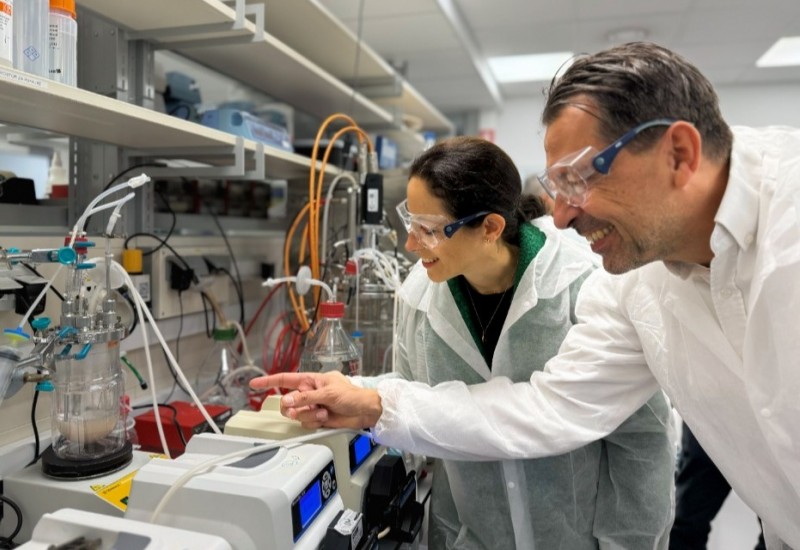Feature article: Resource efficiency – Key to creating a circular economy
Dr Anahita Khanlari, industry marketing director, chemicals, at AspenTech, looks at how digitalisation can expedite the journey towards circularity
The chemical industry is facing a dual challenge. On one hand, demand is increasing globally, putting pressure on manufacturers to increase production. On the other, the ongoing climate and environmental crises require urgent attention and action from every manufacturer. Striking a balance between these two seemingly diverging directions would require conserving resources with increasing production efficiency to improve bottom line while meeting climate and sustainability goals.
Constant global disruptions, from the pandemic to regional conflicts and subsequent market effects, including supply chain volatilities, inflation, and energy security challenges, have pounded the chemical industry over the past couple of years. In response, organisations across the sector, from bulk chemicals producers to speciality chemicals manufacturers have accelerated efforts to become more efficient.
Digitalisation is key to gaining operational visibility and taking practical actions. Even though it has been years since the industry embarked on its digitalisation journey, based on a 2022 EY report, the speed of digitalisation grew by 56% post-pandemic.1
The chemical industry has taken practical operational approaches to become more resource-efficient, some much easier to deliver than others. The pursuit of energy efficiency can be one of the more straightforward profitability and sustainability goals for chemicals companies. This approach relies on digital systems to gain a holistic view of the operation and opportunities to cut back fuel use with minimum capital investment.
Reusing by-products or post-consumer recycled resins as feedstock are among other approaches chemical companies take. Here speciality chemicals manufacturers may adopt different strategies and models to larger bulk chemicals companies as they travel on the road to optimal resource efficiency.
For instance, a speciality polymer manufacturer might focus on waste elimination and the circularity of their products, while reducing Scope 1 emissions is likely to be an urgent concern for an ethylene producer. In either case, digital solutions are instrumental to studying the feasibility or effects of these changes in existing processes.
Digitalisation benefits
Digitalisation brings benefits to chemicals manufacturers across a wide range of operational areas. Asset design and optimisation, supply chain management, and improving energy efficiency are among these areas.
Integrated planning and scheduling tools, for example, can help chemical producers continue to remain profitable even in the face of ongoing market disruptions. PTT Global Chemical, a major producer of olefins and aromatics, used an AspenTech system to choose the most profitable feedstock, production plan and products to maximise created value.
Digital twins provide another practical tool to maximise resource efficiency in chemical manufacturing. Creating a digital twin can help identify opportunities across an entire site to enhance energy efficiency without a requirement for capital investment.
For example, LG Chem used Aspen Plus and Aspen Energy Analyzer to create a digital twin of their 900,000 tonnes/year ethylene plant in Daesan, Korea. An energy analysis identified about 60 energy savings opportunities. After reviewing commercial and operational feasibility, 20 of these opportunities were selected for further consideration and implementation. These changes resulted in 3-4% overall plant energy reduction, with an estimated $10 million/year in additional profits for the plant.
Digital twins can also facilitate monitoring emissions at the equipment level, locating emission sources, and helping to validate and reconcile site-wide data that can be used for reporting and decision-making purposes. One way for large chemical manufacturers to improve energy efficiency is through active utilities management.
Digital systems like advanced process control (APC), combined with digital twins, provide visibility and control over utility operations, emission levels, and opportunities to minimise them. APC has been used across the asset-intensive industries for many years now to enhance process efficiency. By using AI and machine learning (ML) to solve non-linear problems, the latest AspenTech APC tools learn from historic performance of the plant and enable users to optimise for desired economic and operational variables.
Circular economy needs
Achieving net zero for chemical companies cannot happen in silos. Apart from necessary capital investments, it will also require partnership across the chemical value chain.
Reducing or eliminating fossil fuel use will depend on coordinated efforts to minimise waste and to create the circular economy through which post-consumer waste, alternative fuels, advanced recycled materials and clean hydrogen can substitute for non-renewable fuel sources. Millions of tonnes of hazardous materials are produced every year by chemical plants and little is recycled.
In its report ‘Winning in a Circular Economy’ report, Accenture details that of the 140 million tonnes of chemical products consumed in Europe each year, only 9 million became available in recyclable waste streams. Almost 70% of the material consumed is neither accessible for recovery nor recycling since the chemicals are either dispersed in the environment or unable to be separated from the final product.2
Innovative strategies are fundamental for chemical companies to progress toward the circular economy goals and digital technologies are critical to accelerate this effort. A recent study by the ARC Industry Forum, polling the opinions of chemicals industry manufacturers named complex supply chains, lack of proven technologies, inconsistent regulatory policies and a lack of economic viability as the most significant barriers to achieving circular economy goals. However, 75% percent of respondents said they believe digital capabilities are essential to tackle the need for sustainability and the challenges of the circular economy.3
Digital systems can play an essential role to help advance the circular economy. Innovative supply chain solutions, for example, can help companies to better integrate post-consumer materials into their value chains while APC technologies are helping to lower energy use and flaring in production processes.
When it comes to designing new technologies, process engineering tools like Aspen Plus and Aspen Hysys help designers to screen a variety of alternatives in order to select the most viable and cost-effective option. Designing new polymer processes, a pyrolysis-based chemical recycling plant or fermentation reactors to turn bio-feedstock to chemicals are all possible through these tools. By comparing energy demand and CO2 emissions in each case, the designers are also able to make informed decisions and choose designs with the smallest footprint. AI is increasingly used to support circular economy goals.
Relying on AI, asset performance management (APM), and predictive and prescriptive maintenance tools help to improve asset reliability and reduce process degradation in operations. Chemicals manufacturers are also increasingly embracing the use of AI-driven models to design otherwise complicated systems (e.g. reaction schemes) to increase yield and productivity. Together, all these systems create more efficient and sustainable operations.
The time is now
As many of the examples above have served to illustrate, the chemical industry is leveraging digital solutions more than ever before. Digital systems are increasingly proving their worth when it comes to minimising the carbon footprint of the sector’s activities and also improving resource efficiency. As a result, they are successfully driving value across every section of the chemicals value chain from design to supply chain, production, reliability, and maintenance.
Contact
AspenTech
www.aspentech.com
References:
1. https://www.ey.com/en_gl/strategy/digital-investment-report
2. chrome-extension://efaidnbmnnnibpcajpcglclefindmkaj/https://www.accenture.com/_acnmedia/PDF-117/Accenture-Winning-In-A-Circular-Economy-Executive-Summary.pdf
3. https://www.arcweb.com/industry-best-practices/digital-capabilities-advance-circular-economy















